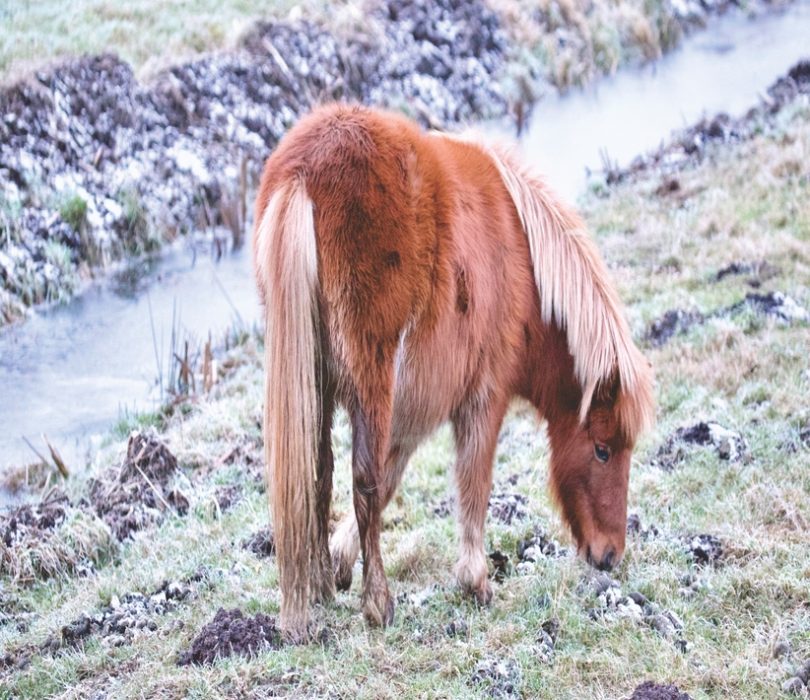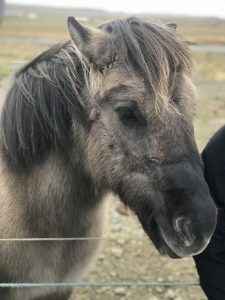 When I first heard about Iceland horses, I thought they would be similar to Canada’s Newfoundland Ponies. Meaning they would be similar to regular horses, just a bit smaller. Upon researching for things to do in Iceland, there were a lot of suggestions to go on a horseback tour to explore Iceland. This got me very curious as to what the big deal is with Iceland horses? Is there something that makes them special or different than other horses?
When I first heard about Iceland horses, I thought they would be similar to Canada’s Newfoundland Ponies. Meaning they would be similar to regular horses, just a bit smaller. Upon researching for things to do in Iceland, there were a lot of suggestions to go on a horseback tour to explore Iceland. This got me very curious as to what the big deal is with Iceland horses? Is there something that makes them special or different than other horses?
Iceland horses are unique
The Iceland horse itself is small, weighing around 725-845 lbs (or 320-360 kg) and stands around 4.2-4.6 feet tall (132-134 cm). They have sturdy backs and are very muscular making it easy to carry people. To be honest. I’m not a small woman and I thought there was no way this tiny horse would be able to carry someone of my size. But everywhere we went I say horses carrying people even bigger than me.
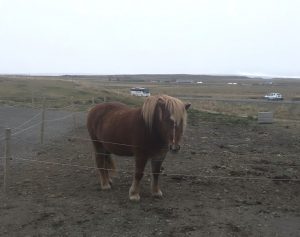
These friendly sturdy horses have a unique color variation. In fact, the Iceland language has more than 100 names for the various color patterns and hues.
Iceland horses are treated like a member of the family. Some say this is what creates their easy-going temperament. These horses are known worldwide for their temperament and large personality.
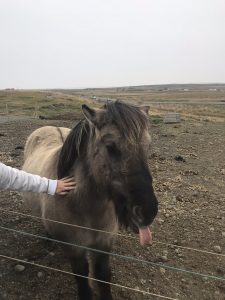
What’s the five gaits everyone talks about?
So apparently having five gaits is something unique in the entire world to only Iceland horses. I had no idea what a horse gait is (ways of walking) or what this meant. Apparently, horses have 3-4 gaits in varying speeds: walk, trot, canter, and gallop. Well the Iceland horse has a fifth ‘tölt’, Iceland word for ‘walk’. With a tölt walk horses lift their front legs higher and only one foot touches the ground at a time.
This ambling gait come naturally to the horses and once they reach it feels more like the horse is gliding. This provides a more comfortable ride for the rider and makes it easier for the horse on uneven terrain.
Note: It is believed at one time all horses had a fifth gait. One interesting thought is that since horse carts were never a part of Icelandic history it was not bred out of the Iceland horses like it was in other European countries to accommodate horse carts and carriages.
Iceland horses also have a unique pace called ‘skeið’. This fast smooth pace allows horses to reach up to 50 km/h. Used in pacing races and activities it not suitable for long-distance travel like cross country travels.
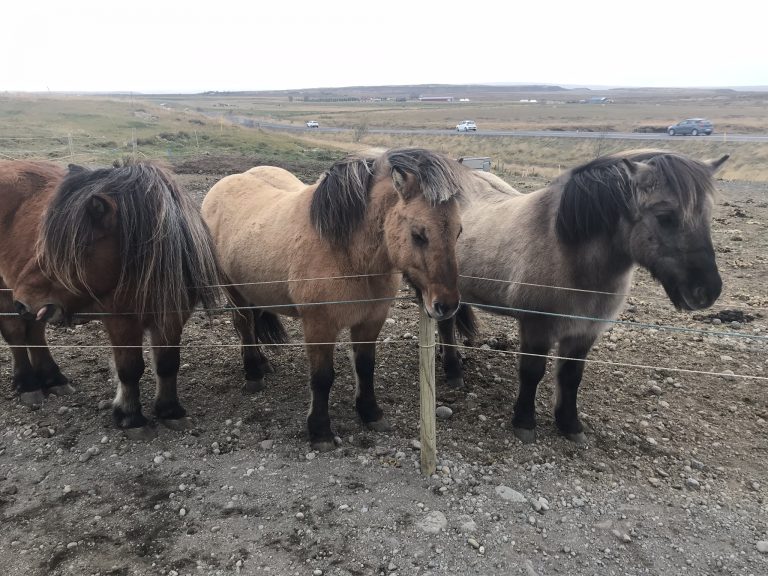
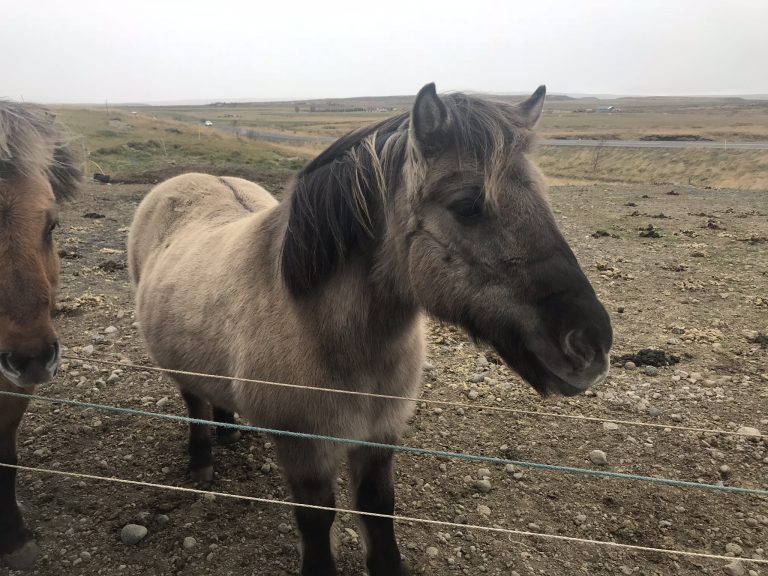
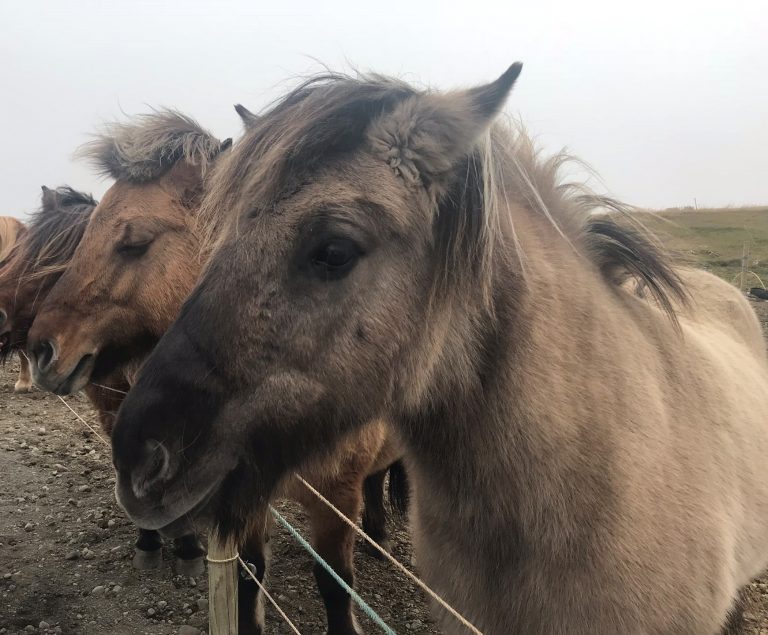
Why so many horses?
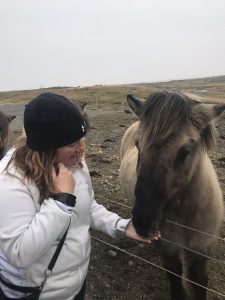 For a country that has around 325,00 people, it’s surprising that there are around 80,000 horses within the country (note: there are another 100,000 outside the country). While used for races and recreation, horse riding tours are a popular way to explore Iceland nature with panoramic views. I can’t wait to go back and use a horse to check out the multitude of sheep we saw everywhere, including on the sides of mountains… I was a bit obsessed. With tourism continuing to grow in Iceland, the horse tours are available for all experience levels of riders and can go from a day to a week. The good thing is that even if you fall off you don’t have far to go to the ground.
For a country that has around 325,00 people, it’s surprising that there are around 80,000 horses within the country (note: there are another 100,000 outside the country). While used for races and recreation, horse riding tours are a popular way to explore Iceland nature with panoramic views. I can’t wait to go back and use a horse to check out the multitude of sheep we saw everywhere, including on the sides of mountains… I was a bit obsessed. With tourism continuing to grow in Iceland, the horse tours are available for all experience levels of riders and can go from a day to a week. The good thing is that even if you fall off you don’t have far to go to the ground.
They have a long history
Icelandic horses were first brought to Iceland 1100 years about by the early settlers from Norway. These horses are also the original ancestors of Shetland, Highland and Connemara ponies. The original breed is now extinct outside of Iceland. Within the country they have worked to maintain the pure lineage of the horses. For 1,000 years no other breed of horse has been allowed into the country, which has gone a long way to kept our disease. Once a horse is exported for a horse show, breeding or any reason they are never allowed to return.
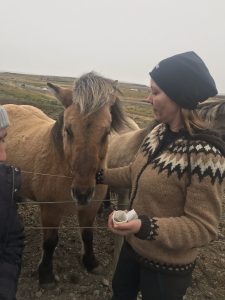
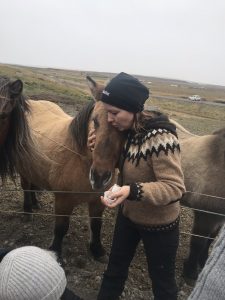
These horses also play a large part in Icelandic history and Norse mythology, notably Sleipnir, Óðinn’s eight-legged horse. In Icelandic Sagas such as Hrafnkel’s Saga, Njál’s Saga and Grettir’s Saga, horses play pivotal roles in horse fights, as status symbols, and not least as plot devices.
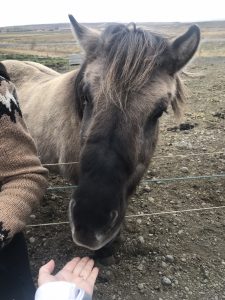
Can the horse survive the harsh climate?
Iceland horses are built to survive the terrain and weather. It is sturdy and it’s outter layer of shaggy fur, similar to a bisson than North American horses. This layer enables them to endure and stay outside the entire year, even during harsh conditions.
Are Iceland horses really eaten?
Yes. It is true that some Icealndic horses are bred for food, but it is a very small portion. Surprisingly 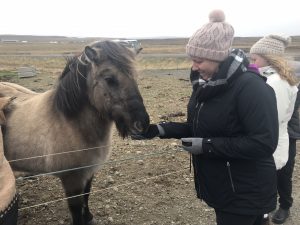 horse meat is common in North America and throughout Europe. When Iceland converted to Christianity in 1000 AD one condition was that they could still eat horse. Today in Iceland horse meat is probably the least popular and doesn’t come close to the popular sheep, which number 800,000 in the country. Most Iceland horses are a part of everyday life and thought of as a companion used to explore the rugged countryside through rivers, lava fields and glaciers.
horse meat is common in North America and throughout Europe. When Iceland converted to Christianity in 1000 AD one condition was that they could still eat horse. Today in Iceland horse meat is probably the least popular and doesn’t come close to the popular sheep, which number 800,000 in the country. Most Iceland horses are a part of everyday life and thought of as a companion used to explore the rugged countryside through rivers, lava fields and glaciers.
Check out other Iceland stories:
What is a Guest House in Iceland
What you Need to Know Before you Visit the Blue Lagoon
Travel Bloggers Advice for Visiting Iceland

